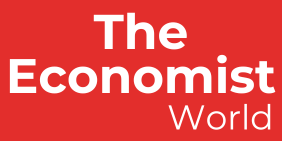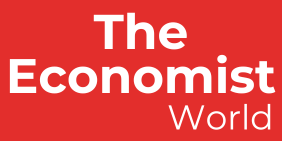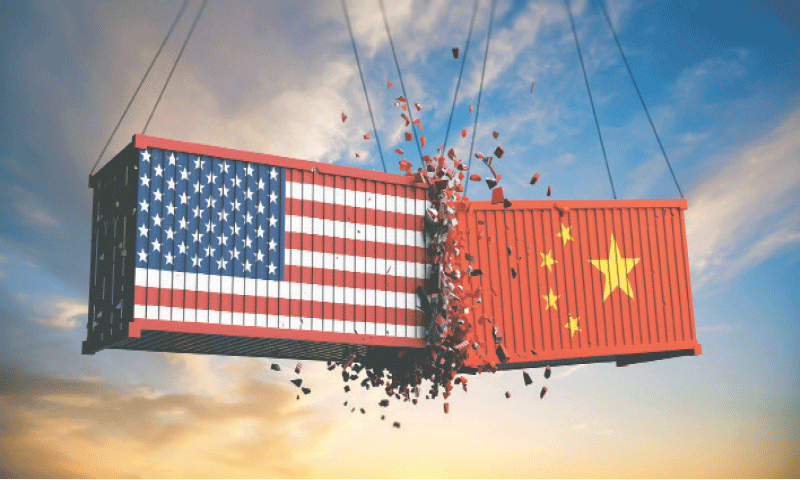Last Friday, China raised tariffs on US goods to 125 per cent to match the import levies slammed by President Donald Trump on its exports as the world’s two largest economies took turns putting trade barriers against each other. But Beijing said it would ignore further levies by President Donald Trump because it no longer makes economic sense for importers to buy from America, dismissing Trump’s mounting brinkmanship as a “joke” and a “numbers game”.
Though the US president insists that his tariff policy is “doing really well”, the spiralling trade war notwithstanding, global markets remain jittery. Pressure is mounting on Trump as recession risk rises. “The recession risk is much, much higher now than it was a couple weeks ago,” noted Adam Hetts, global head of multi-asset at Janus Henderson.
The dollar has slid, intensifying a sell-off in US government bonds, the world’s biggest bond market. Gold, a safe haven for investors in times of crisis, has scaled to a record high. With the dollar weakening, the selling of US assets was perhaps most exemplified by the drop in prices of the US 10-year Treasury note, long considered among the world’s safest investments.
The uncertainty unleashed by the escalation in the US tariff war against most parts of the world does not augur well for Pakistan
The same day, a top UN economist said global trade could shrink by 3pc as a result of the new US tariff measures. “There will be shifting, I think, in supply chains… there will be a reassessment of global alliances. There will be geopolitical shifts and economic as well,” said Pamela Coke-Hamilton, head of the International Trade Centre.
US Federal Reserve officials warned that the Trump administration’s current trade policies will accelerate inflation this year. “It’s hard to know with any precision how the economy will evolve,” New York Federal Reserve President John Williams said.
The US had singled out China by increasing import taxes on Chinese goods to a staggering 125pc when Trump dropped for three months the higher so-called reciprocal tariffs slammed on dozens of countries to punish Beijing for retaliating with its own levies instead of seeking negotiations with Washington to reset the terms of bilateral trade like the rest of the world.
Trump had on April 2 deployed painfully higher tariffs of up to 50pc — this includes a 10pc universal baseline levy for all — for 70 countries as a stick to force them to renegotiate the terms of bilateral trade as the US seeks to narrow its burgeoning trade deficit.
Following a week-long market turmoil, he blinked first, temporarily freezing higher tariffs but raising them for China to a total of 145pc, including 20pc levied before he started his all-out tariff war against all the US’s trading partners. He has warned that the tariffs could come back “if we can’t make the deal we want to make”.
“The United States’ imposition of round upon round of abnormally high tariffs on China has become a numbers game with no practical significance in economics,” China’s commerce ministry said. If the US continues to play the tariff numbers game, China will ignore it, a spokesperson said. Beijing has also imposed export controls over rare earth elements required for green technology and is preparing to file a lawsuit with the World Trade Organisation over the latest round of levies.
Before striking the last round of tit-for-tat tariffs, China had unveiled a comprehensive framework reaffirming its stance on trade ties with the US, warning that its tariffs would “ultimately backfire”. In the white paper issued for the third time since the US-China trade war started in 2018 before the retaliatory strike on the US, Beijing has outlined its position on major bilateral concerns.
The document, China’s Position on Some Issues Concerning China-US Economic and Trade and Relations, criticises Washington for levying tariffs exceeding $500 billion on Chinese exports since 2018. It describes the US actions as “unilateralism and protectionism that disrupts international trade cooperation and multilateral World Trade Organisation framework”. However, it still leaves the door open for ‘equal-footed dialogue’ to avoid lasting ramifications of escalation of trade war between the two economic giants.
For years, the US has portrayed economic relations with China as rivalry. However, the statistics reveal a more nuanced reality. Most of China’s exports represent 57.2pc of its total shipments to America. On the other hand, the US primarily exports fossil fuels, high-tech machinery, electronic parts, optical devices, and agricultural products such as soybeans to China, making up 52.8pc of its total exports to the country.
The services sector has also seen significant growth in bilateral ties. In 2022, US firms earned an estimated $490.5bn in revenue from China — a level of market access and business potential that few other nations provide to American companies. History has shown cooperation benefits both sides, while confrontation results in mutual loss, reads the white paper.
The paper criticises the US for violating elements of the economic and trade agreement, including the broadening of national security definitions, overuse of export controls, and imposition of “reciprocal tariffs.” It points out that these actions have severely undermined the healthy and stable development of bilateral economic relations.
It is too early to say anything about how these tariffs will reshape the world economy; the uncertainty unleashed by the escalation in the US tariff war against most parts of the world does not augur well for countries like Pakistan that have been slotted for higher punitive import levies. Whatever the outcome, no winners will emerge once things settle down.
Published in Dawn, The Business and Finance Weekly, April 14th, 2025


